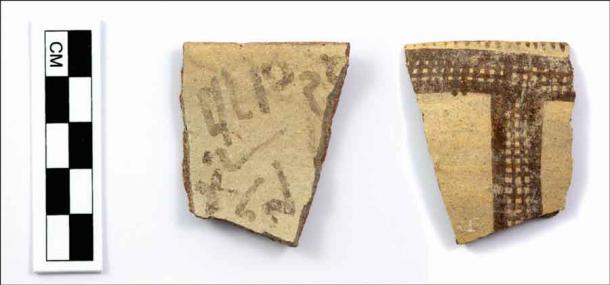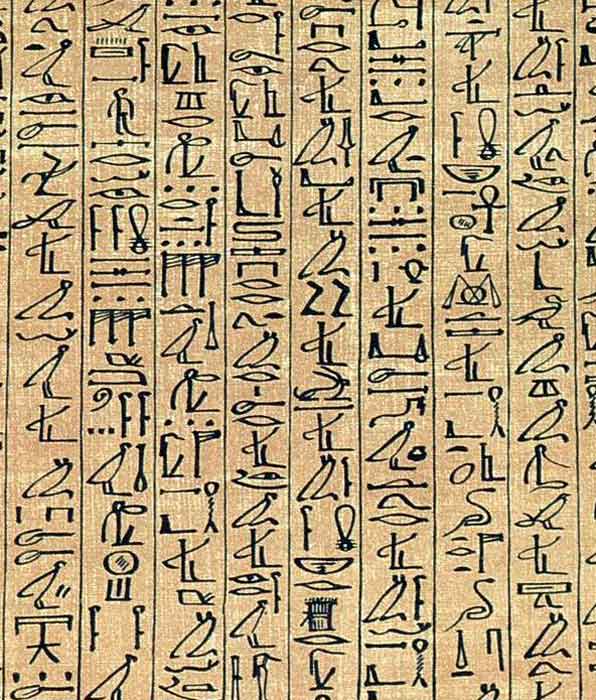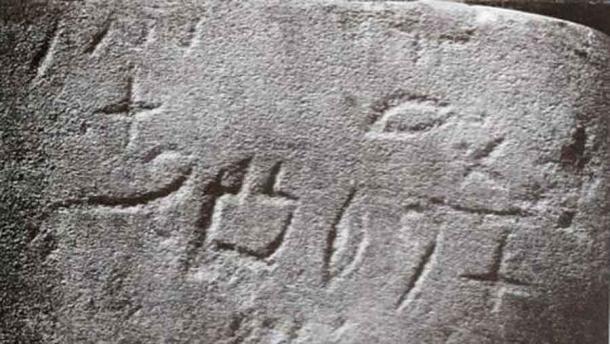A team of Austrian and Israeli archaeologists working the fertile ground of the famed Tel Lachish site in central Israel made a discovery that has altered existing theories about how the first alphabetic script was transmitted from ancient Egypt to other parts of the world. While exploring architectural ruins previously unearthed at this ancient site, they found a piece of a ceramic bowl that had been inscribed with two lines of short written text. Closer analysis of the inscription revealed the existence of previously unseen letter variations, which meant the archaeologists had discovered a new form of alphabetic script. Their findings and their theories will be published in Antiquity.
Radiocarbon dating of ancient barley grains found together with the ceramic pot sherd revealed that this particular script had its origin in the Late Bronze Age, or more specifically in the 15 th century BC. This was significant since no examples of written alphabetic script from this period had ever before been recovered.

The ceramic bowl sherd, found in central Israel, upon which was written what is probably the oldest form of alphabetic script ever found. ( Antiquity Publications Ltd )
After comparing the ceramic sherd script to recovered samples of the written alphabetic scripts from earlier and later times, the archaeologists developed a new, evidence-based hypothesis about how the first alphabetic script moved from Egypt to the Southern Levant, which was its first step on a journey that would carry it across the globe.

The first alphabetic script was from Egypt and was likely an adaptation of the cursive Egyptian script shown here by Canaanite slaves who had a spoken language of their own but no written language. (British Museum / Public domain )
Tracing the Path of Our Alphabetic Script from Egypt
Like so much of our cultural, societal, and spiritual heritage, the modern alphabet has its roots in ancient Egypt . The first alphabetic scripts were created and written down on Egyptian soil in the early second millennium BC and worked their way east into the Levant from there.
The Levant refers to territory directly adjacent to Egypt and includes territories along the Eastern Mediterranean currently occupied by Israel, Palestine, Jordan, Lebanon, and a good portion of Turkey.
Archaeologists discovered the earliest known samples of alphabetic writing while exploring 19 th century Egyptian runes in the early part of the 20 th century. Items inscribed with these proto-alphabetic scripts were found in and around the site of Egyptian mining operations in the Sinai Desert , at a location known as Serabit el-Khadim .
The miners – and the inventors of the first alphabetic letters – were Canaanites, many of whom may have been brought to Egypt as slaves. In order to translate their spoken language into written form, the Canaanites repurposed shapes or characters from the cursive hieroglyphic script that had been used for written communication in Egypt for more than 1,000 years.
In 1998, further samples of the same proto-alphabetic script, also dated to the 19 th century BC, were found inscribed in rocks at a site in the western Egyptian desert known as Wadi el-Hol. This discovery confirmed that the first written alphabet had also been used throughout Egypt, in the Nile River Valley as well as on the Sinai Peninsula.

The early Serabit inscription found at Serabit el-Khadim, Egypt. (Petrie / Public domain )
The usefulness of such an innovation was obvious. The new alphabet allowed for a more streamlined and universally comprehensible form of written communication than complex Egyptian hieroglyphs, which were more firmly grounded in a specific culture and were not designed for exportation.
From Egypt the new written script moved eastward into the Southern Levant, as was proven by the discovery of related inscriptions in Palestine in 13 th century BC sites. This version of the alphabet, which would ultimately transform into the Phoenician alphabet and Greek alphabet after that, diverged from its progenitor in certain ways. Nevertheless, it was similar enough to establish a clear historical relationship.
But between the 19 th and 13 th centuries BC, there remained an historical gap, with no proven samples of alphabetic script available to clear up the uncertainties.
Left without a guidepost to interpret this gap, many archaeologists concluded that the new form of writing had only arrived in the Southern Levant at that later date, or shortly before it. According to those who developed this theory, the Egyptian alphabet would have been introduced to the Levant by conquerors from Egypt’s Nineteenth dynasty, who dominated the region throughout the 13 th century BC.
As recently as May 2020, Israeli archaeologist Nadev Na’aman published an article arguing that alphabetic writing didn’t arrive in the Southern Levant until the 14 th century BC. He linked its spread after that to the activities of scribes in Egyptian centers of power.
But the discovery of the 15 th century BC script at Tel Lachish has upended all such theories. The passage into the Levant of the new alphabetic innovations would have had to occur sometime between the 19 th and 15 th centuries BC and could not have been a consequence of an enforced process or invasion at a later time.

Like the Serabit script above, this proto-alphabetic script, also dated to the 19 th century BC, was found inscribed in rocks at a site in the western Egyptian desert known as Wadi el-Hol. ( Public domain )
The “First” Alphabetic Script Travelled In Peaceful Times
In their article discussing their discovery in the June 2021 edition of Antiquity, the Austrian and Israeli archaeologists introduce a new hypothesis that explains how alphabetic writing was transmitted from ancient Egypt to the Southern Levant.
“Early alphabetic writing spread to the Southern Levant during the late Middle Bronze Age [1650-1550 BC] and was in used by at least the mid-fifteenth century BC at Tel Lachish,” they state. “The proliferation probably happened during the late Middle Bronze Age and the Egyptian Second Intermediate Period [1782-1570 BC], when a dynasty of Western Asiatic origin (the Hyksos) ruled the northern parts of Egypt.”
At this time in history, political control over Egypt was divided, with the Nubians holding authority in the south, the Thebans ruling in the center, and the outsider Hyksos maintaining autonomy in the north.
Since the Hyksos were a Semitic people whose ancestors were immigrants from Palestine, their relationships with the city-states of the Southern Levant were cordial and forged in an environment where the embattled Hyksos needed allies wherever they could find them.
It was in this context that the world’s first alphabetic script was likely imported from Egypt to the Levant.
The new Egyptian alphabet arrived in peace rather than in war, and undoubtedly helped cement bonds of mutual interest between the Hyksos and their ancestors in their ancient homeland.
The full report will be available on Antiquity, https://doi.org/10.15184/aqy.2020.157
Top image: The ceramic bowl sherd, found in central Israel, upon which was written what is probably the oldest form of alphabetic script ever found. Source: Antiquity Publications Ltd
By Nathan Falde
Related posts:
Views: 0
 RSS Feed
RSS Feed

















 April 15th, 2021
April 15th, 2021  Awake Goy
Awake Goy 



 Posted in
Posted in  Tags:
Tags: 
















